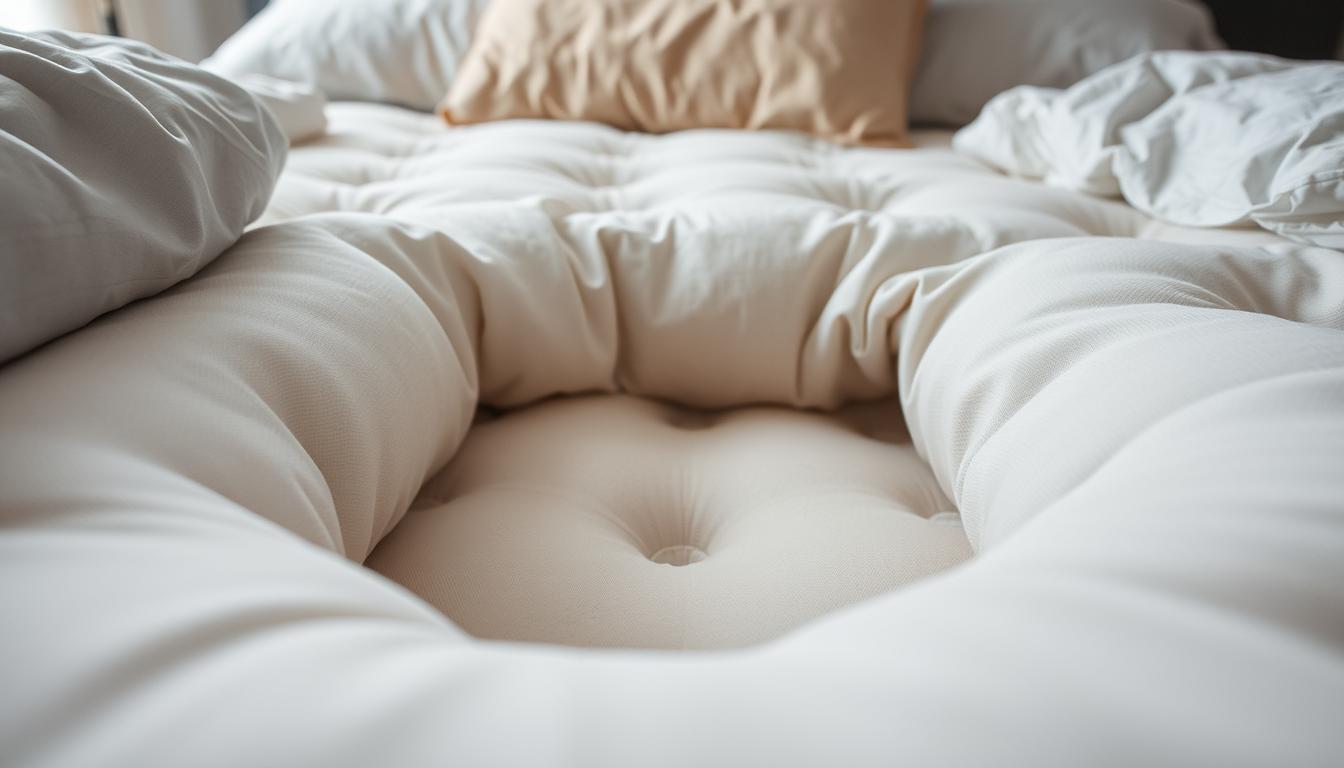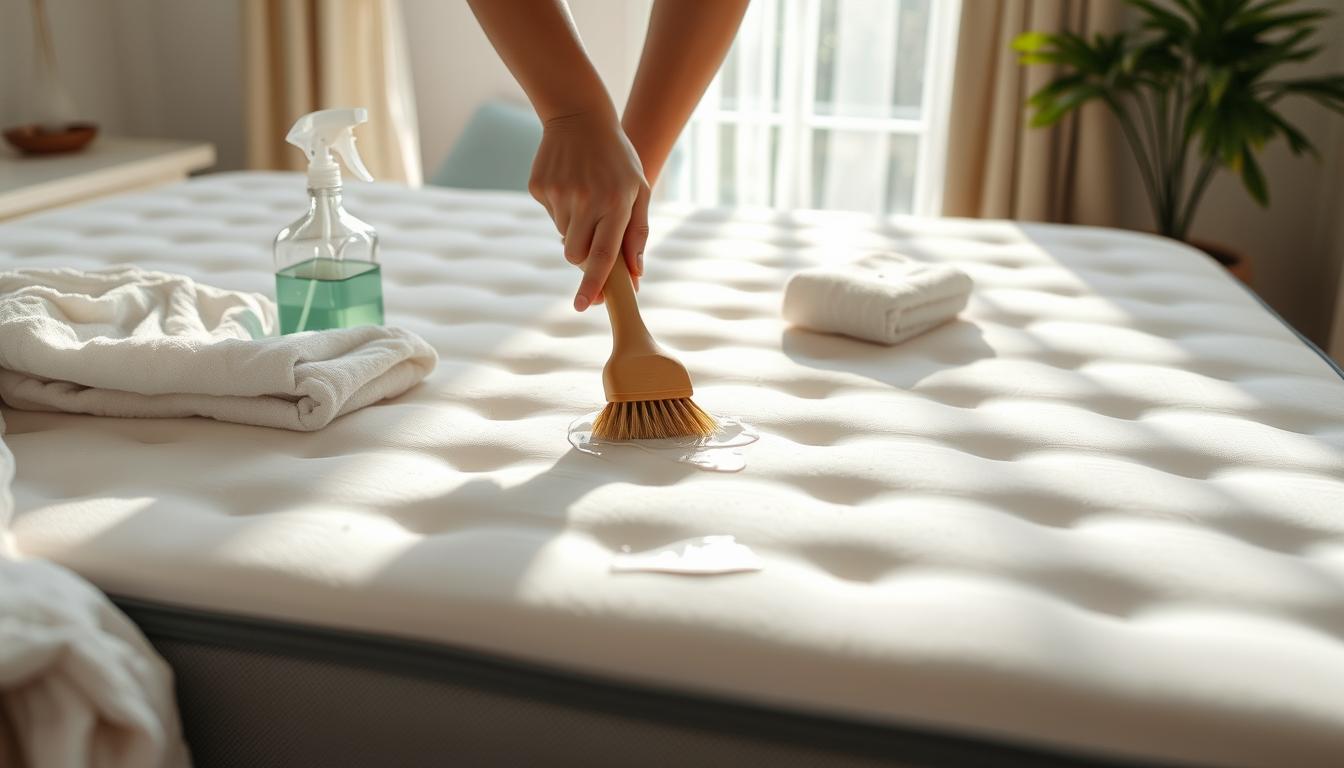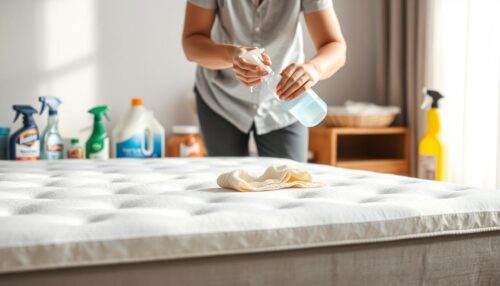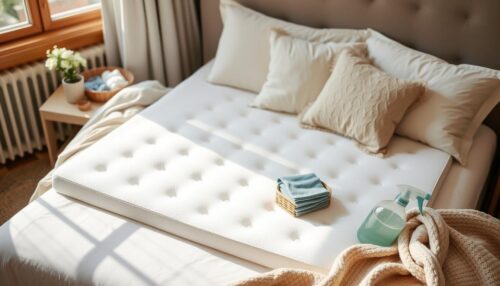When a mattress begins to sink or exhibit discernible dips over time, it is said to be sagging. This might happen when the mattress’s components lose their capacity to support and restore their shape. Your mattress may feel less comfortable and your sleep quality may suffer if you notice any indentations or uneven spots where you typically sleep.
Possible Reasons for Mattress Sag
Preventing and resolving mattress sagging requires an understanding of its possible causes. The following are some typical causes of mattress sagging:
- Aging Foam: The foam in your mattress may become less supportive and supple as it ages. Sagging and a less pleasant sleeping surface could result from the foam beginning to compress.
- Loss of Coil Tension: A mattress’s coils may lose some of their support and tightness over time. The mattress may sink as a result, creating painful dips and body impressions.
- Inadequate Mattress Maintenance: Ignoring routine mattress care, like turning or flipping your mattress, might result in uneven deterioration. Over time, dust and grime buildup can deteriorate the materials and cause sagging.
How to Stop Sagging Mattresses
Take into account the following advice to stop or lessen mattress sagging:
- Rotate Your Mattress Frequently: To ensure that weight is distributed evenly and prevent undue wear on one side, rotate your mattress every three to six months.
- Select a Mattress with Responsive Materials: Look for a mattress that makes use of latex or memory foam, two types of responsive materials. These fabrics give tailored support, adjust to the curve of your body, and lessen the chance of sagging and body imprints.
- Practice Appropriate Mattress Maintenance: Pay attention to the cleaning and routine care instructions provided by the manufacturer. This can help keep your mattress from sinking and extend its lifespan.
Recognizing Body Impressions
Over time, indentations or depressions known as body impressions develop on a mattress’ surface. They happen when the mattress adjusts to your body’s weight and shape while you sleep. Particularly in places like the hips, shoulders, and lower back where you sleep a lot or exert more pressure, body impressions can cause your mattress to seem uneven or less comfortable.
Avoiding Long-Term Body Impression
Although certain body imprints are acceptable, avoiding permanent body impressions will prolong the life of your mattress and help maintain a more comfortable sleeping surface. Here are a few ways to avoid this:
- Rotate Your Mattress Frequently: Rotating your mattress every three to six months can assist distribute weight evenly and reduce the creation of long-lasting body impressions, much like preventing sagging.
- Invest in a Mattress with Responsive Materials: Select a mattress made of latex or memory foam, two types of responsive materials. By distributing your body weight more equally, these materials can lessen the possibility of long-lasting body impressions.
- Think About Your Sleeping Position: Different sleeping postures might put different pressure points on different parts of the mattress. You can reduce the formation of long-lasting bodily impressions by being aware of your sleeping posture and shifting positions frequently during the night.
Mattress Types to Take Into Account
There are a number of options available when it comes to choosing a mattress that reduces body imprints and sagging. Every mattress type has special qualities and advantages designed to satisfy your tastes and sleeping needs. Let’s examine the many mattress kinds to take into account:
Mattress with Memory Foam
Memory foam mattresses are known for their capacity to adapt to the shape of your body and prevent sagging. Their thick polyurethane foam upper layers offer superior support and ease joint discomfort. Additionally, memory foam mattresses are excellent at isolating motion, which makes them perfect for light sleepers or couples who want to sleep soundly. Comfort and temperature control can also be improved by memory foam mattresses that have been loaded with cooling gel or plant-based ingredients.
Mattresses made of latex
Latex mattresses offer a dependable sleeping surface, are long-lasting, and are environmentally friendly. These mattresses provide responsive support, softly adjusting to the shape of your body without completely following its curves. In order to provide a comfortable sleeping environment, latex mattresses also feature cooling qualities that encourage airflow and disperse body heat.
Mattresses with innersprings
A traditional choice that helps stop sagging and body imprints is an innerspring mattress. They are incredibly breathable and provide great edge support to keep you from rolling off the bed as you sleep. It’s crucial to remember that innerspring mattresses could need a bed base in order to function at their best, and that light sleepers or people who need particular joint support might benefit more from other mattress options.
Mattresses that are hybrid
Hybrid mattresses offer a comfortable sleeping surface with even weight distribution and support by combining the qualities of memory foam and conventional spring beds. These mattresses feature a comfort layer composed of latex or viscoelastic foam and a coil base for stability. For side sleepers who want a bed with greater bounce and pressure point alleviation, hybrid mattresses are especially well-suited.
Air Mattresses
One or more air chambers that may be expanded to produce the appropriate firmness are the foundation of air mattresses. While slow air leaks and material elasticity loss can cause sagging over time, sagging can be avoided by according to the manufacturer’s inflation and maintenance recommendations. It’s also crucial to provide a level and firm platform for your air mattress.
Water bed Mattresses
Because waterbed mattresses distribute body weight uniformly and follow your body’s natural contours, they provide a sleeping experience free from sagging. These water-filled mattresses provide a comfortable and supportive sleeping surface by removing pressure spots and preventing sagging.
How to Maintain Your Mattress
Maintaining your mattress properly is essential to avoiding body imprints and significant sagging. You may increase the longevity of your mattress by adhering to these tips:
- Rotate Your Mattress Frequently: Rotate your mattress frequently to distribute weight evenly and avoid undue wear on one side.
- Avoid Putting Too Much Weight in One Place: Take care not to sit on the edges of your mattress for long periods of time or place heavy items on it. This may put undue strain on the springs and cause sagging.
- Use a Mattress Protector: To protect your mattress from spills, stains, and dampness, think about using a mattress protector. This can stop early drooping and preserve the integrity of the materials.
- Make Sure Your Mattress Is Properly Supported: Make use of a strong bed frame or foundation that supports your mattress well and distributes body weight equally.
Is it typical for a mattress to have body impressions?
Indeed, it is typical to expect body impressions in a mattress over time. As the mattress supports and molds to the shape of your body, body impressions are created. Memory foam and other conforming materials made to react to pressure and body heat are more likely to experience them.
How can a sunken area on a mattress be fixed?
One way to address a sunken area on a mattress is to turn or rotate it to better distribute weight. Additional support and surface restoration can also be achieved by placing a mattress topper, additional pillows, or foam padding on the sunken area. It is advised that you contact the mattress’s manufacturer or retailer for additional help if the sunken region continues or gets worse.
Which mattress is impervious to body impressions?
Compared to other mattress kinds, memory foam mattresses are less prone to leave body impressions. Because memory foam is viscoelastic, it can conform to the curves of the body and disperse weight uniformly, reducing the likelihood of long-lasting dents. Furthermore, memory foams with a higher density are typically more durable and impervious to body impressions.
Can a sagging mattress be fixed with a mattress topper?
Yes, by providing more cushioning and support, a mattress topper can help a sagging mattress feel better. It can lessen the appearance of sagging and increase comfort. A mattress topper might not completely address the underlying sagging problem, therefore it’s crucial to take the mattress’s general health into account.
How long until a mattress starts to sag?
Generally speaking, a mattress should last seven to ten years before drooping becomes apparent. However, depending on variables like mattress quality, usage patterns, and proper care, the lifespan may vary. Because of their foundation layers, high-quality foam mattresses typically last longer than coil mattresses.
Final Thoughts
Over time, common problems like body imprints and mattress sagging can compromise your mattress’s comfort and support. By being aware of the causes and taking preventative steps, such as regular maintenance, selecting the right kind of mattress, and rotating it on a regular basis, you can avoid sagging and lessen body impressions. A comfortable and supportive sleeping surface for many years can be ensured by making an investment in a high-quality mattress and following the right care and maintenance procedures. Remember that a healthy mattress is essential for a relaxing and rejuvenating night’s sleep.




